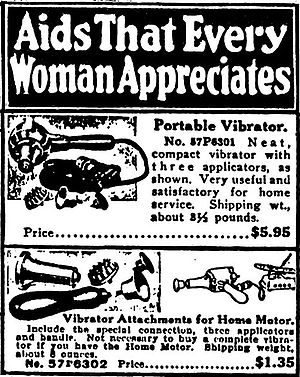Female Hysteria
 From Rationalwiki
From Rationalwiki _(14595913647).jpg)
| Against allopathy Alternative medicine |
| Clinically unproven |
|
| Woo-meisters |
v - t - e
|
Female hysteria, or simply hysteria, is the designation for a malady presenting an extraordinary and shifting range of physical and psychological symptoms. The name comes from the Greek word for uterus (hence "hysterectomy"). Hysteria was originally thought a disease of women brought on by the migration of the uterus. When it was later determined that the uterus was a non-migratory organ, physicians and other learned men concluded that hysteria was the perfect default diagnosis for whatever was troubling their female patients. In time, suspicion grew that hysteria might be iatrogenic – a conceptually constructed disease contracted via the interaction between physicians and patients.
Origin[edit]
The diagnosis dates back to the ancient Egyptians and the cause of the "disease" changed many times throughout its history.
- The first known record of hysteria as the movement of the uterus causing various mental and physical problems dates back to circa 1990 BCE in Egypt. Both Plato and Hippocrates repeated this assertion.
- Galen, living in the 2nd and 3rd centuries CE, believed it to be caused by the stoppage of vaginal fluids resulting from a lack of intercourse.
- In Christian Medieval Europe, hysteria was thought to be the result of demonic possession.
- A number of physicians in Renaissance and early modern Europe claimed it was a neurological disorder.
The accepted treatment was more sex, or "pelvic massages" by a midwife if the woman was unmarried.
Victorian era[edit]

The diagnosis of hysteria became quite common during the Victorian era as nearly any symptoms — headaches, nausea, dizziness, etc. — were considered to be evidence of the "illness". Some physicians estimated as many as a quarter of all women were afflicted with hysteria. Common treatments included the manual stimulation, hydrotherapy (shooting a jet of water at the vagina), or the use of dildos. Electric-powered vibrators were patented in the 1870s for use in doctors' offices to make it easier for women to reach the state of "hysterical paroxysm," i.e. orgasm. Vibrators soon came to be sold in retail catalogs so women could perform their own, er, "medical" treatments.
The 20th century[edit]
As medical diagnosis became more scientific, the symptoms of hysteria were narrowed and diagnoses dropped off over the first half of the 20th century until the diagnosis disappeared. Furthermore, the aftermath of World War I witnessed a surge in cases similar to hysteria among men, an illness that was then called "shell shock" or "male hysteria" and is now known as post-traumatic stress disorder (PTSD).[1] Sadly, these cases could not be cured with a vibrator.
External links[edit]
- Illis, LS. Hysteria. Spinal Cord (2002) 40, 311-312 doi:10.1038/sj.sc.3101327
- Batteries Not Included: A social history of the vibrator by Sarah Boxer
- Technology of Orgasm
See also[edit]
- Sex toys
- Drapetomania
References[edit]
- ↑ Tucker, Abigail. "History of the Hysterical Man." Smithsonian.com, 5 January 2009.
Categories: [Medicine] [Mental health] [Pseudoscience] [Sexism] [Sexuality] [Mental health woo]
↧ Download as ZWI file | Last modified: 12/22/2024 16:20:09 | 7 views
☰ Source: https://rationalwiki.org/wiki/Female_hysteria | License: CC BY-SA 3.0
 KSF
KSF